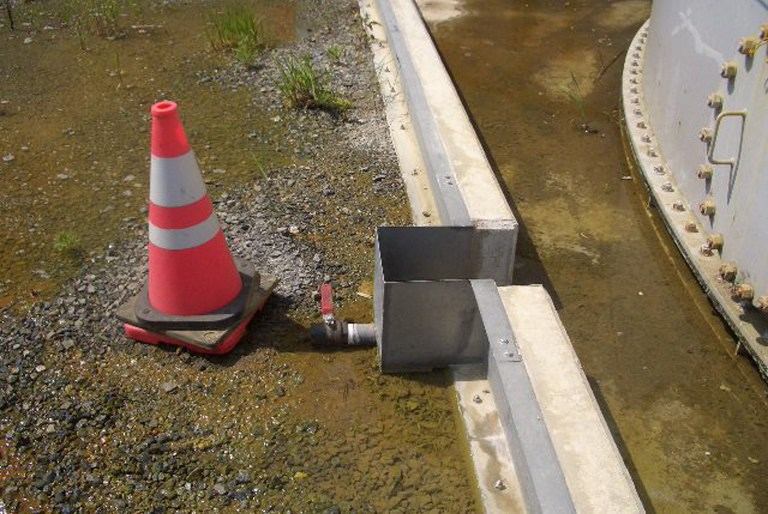SUMMARY
This is AI generated summarization, which may have errors. For context, always refer to the full article.

TOKYO, Japan (4th UPDATE) – Japan on Wednesday, August 21, issued its highest-level warning over the crippled Fukushima plant since a tsunami triggered the nuclear crisis two years ago, saying there was “no time to lose” to seal a tank that has leaked 300 tons of radioactive water.
Nuclear regulators said the leak represented a level-three “serious incident” on the UN’s seven-point International Nuclear Event Scale (INES), which measures radiation accidents.
“Something that we were very much concerned about has occurred,” Nuclear Regulation Authority chairman Shunichi Tanaka told a meeting in Tokyo. “We are in a situation where there is no time to lose.”
The alert, raised from level one which indicates an “anomaly”, is the most serious declared at the ruined plant since March 2011, when a quake-generated tsunami knocked out reactor cooling systems and sparked meltdowns.
At its height, the Fukushima disaster was classified as level seven — one of only two events ever rated in that category along with the Chernobyl disaster in 1986.
The NRA said in a statement that the amount of radiation leakage and the “fact that there is no safety protective layer remaining at the facility” meant the level-three warning needed to be declared.
It will now consult with the International Atomic Energy Agency (IAEA) on the reassessment, it said.
‘Extremely deplorable’
Japan’s top government spokesman, chief cabinet secretary Yoshihide Suga, said the incident was “extremely deplorable”.
“The government as a whole will do its utmost to prevent the leakage of contaminated water as promptly as possible,” he told a news conference. “We will make a proper assessment after consulting the IAEA.”
Other incidents which have been ranked level three include a 2005 radioactive waste leak at the British nuclear reprocessing facility in Sellafield.
The evaluation came a day after plant operator Tokyo Electric Power Company (TEPCO) said some 300 tons of radioactive water was believed to have leaked from one of the tanks that hold water used to cool Fukushima’s unstable reactors.
It said the water, which has formed puddles near the tank, is so toxic that anyone exposed to it would receive the same amount of radiation in an hour that a nuclear plant worker is allowed to receive in five years.
However, the plant lies inside a 20-kilometer (12-mile) exclusion zone and the general public is not allowed near it.
While no one is officially recorded as having died as a direct result of meltdowns in Fukushima’s tsunami-hit reactors, large areas around the plant had to be evacuated. Tens of thousands of people are still unable to return to their homes inside the exclusion zone.
TEPCO said the leak was thought to be continuing on Wednesday and it had not yet pinpointed the source, and was also “hurriedly checking” if any of 350 similar tanks were also leaking.
“We are removing the soil contaminated with the leaked water, while sucking the remaining water from the troubled tank,” a TEPCO spokesman said, adding that there were no significant changes in radiation levels outside the plant.
“We are trying our best not to spread the contamination to areas outside the facility, including the sea,” the spokesman added.
TEPCO struggling
TEPCO vice president Zengo Aizawa told a news conference that the operator was taking the situation seriously.
“Handling contaminated water is our top priority,” he said.
On the Tokyo Stock Exchange, shares in TEPCO plunged 9.28% to 557 yen ($5.70) even as the benchmark Nikkei index closed higher.
The company — which faces huge clean-up and compensation costs — has struggled to handle the world’s worst nuclear disaster in a generation.
Its most serious problem is how to handle the massive amount of water accumulating as a result of continuing water injections to cool the reactors, which has been stored in the hastily built tanks.
The embattled utility in July admitted for the first time that radioactive groundwater had been leaking outside the plant. This month it started pumping it out to reduce leakage into the Pacific.
“Problems with contaminated water have emerged one after another,” Kenzo Oshima, a Nuclear Regulation Authority commissioner, told Wednesday’s meeting.
“TEPCO has been struggling and is likely to continue to do so from now on,” Oshima said.
The problems have led the Japanese government and the NRA to say they would become more directly involved in the cleanup at Fukushima, rather than leaving it to the much-criticized operator.
Prime Minister Shinzo Abe in early August described as “urgent” the battle to stop contaminated water from escaping into the ocean. – Rappler.com
Add a comment
How does this make you feel?














There are no comments yet. Add your comment to start the conversation.